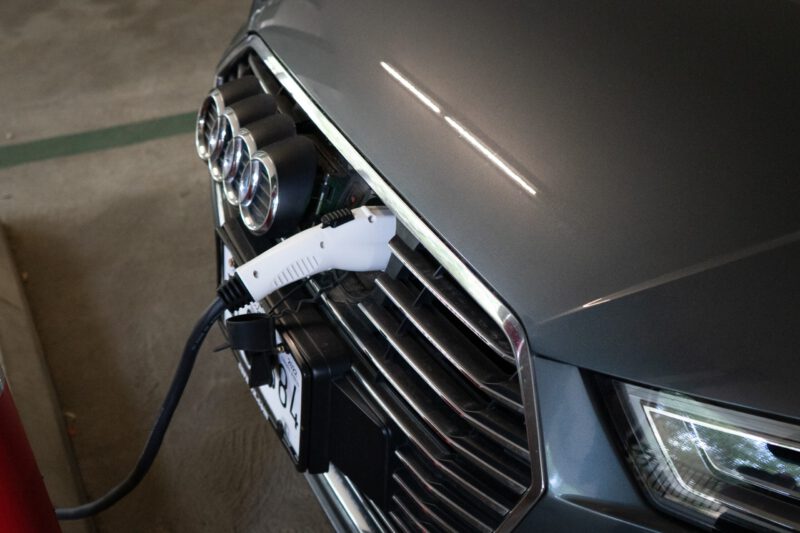Electric vehicles (EVs) are quickly gaining ground in the United States. Manufacturers offer them in various makes and models, so it’s easy for buyers to find their ideal options. Technological improvements in battery life mean people no longer have to worry about running out of power before reaching their destinations.
However, the lack of EV infrastructure still poses problems. There are still far too few electric vehicle charging points, resulting in limitations for current and future owners.
Insufficient EV Infrastructure Could Limit Adoption Rates
A 2022 Consumer Reports study found that 36% of Americans are planning to or are considering buying or leasing an electric vehicle. Additionally, 14% of respondents said they would definitely select an electric option if purchasing one today. That’s up from only 4% in 2020.
The research also examined people’s opinions about EV infrastructure for charging their cars. It showed that 61% of those not committed to buying an electric vehicle had concerns about when and where they could charge it. Relatedly, 55% worried about how far they could go on a full battery.
Half of the Americans polled said free charging points would be the biggest influence on getting them to purchase electric vehicles. About 47% wanted electric vehicle charging options near where they lived, and 45% desired easy access to fast-charging stations. The ability to charge the car at work was far less in demand, with only 10% of those surveyed choosing that option.
Many politicians in the U.S. and elsewhere are aggressively advocating for EV adoption as part of broader, climate-based strategies. However, the findings here strongly suggest that investing in EV infrastructure is one of the most practical and effective ways to warm people up to this newer type of transportation.
EV Infrastructure Is Not Yet Reliably Located
One of the challenges associated with electric vehicle charging stations is that the overall number varies significantly by state. An interactive charging station map provided by the U.S. Department of Energy indicates there are just over 50,000 places to charge an EV in the country. Contrast that with the fact that the country boasts more than 145,000 gas stations and it’s easy to see the issue.
The U.S. Department of Energy’s tool also allows people to input a travel route and get a list of charging points along the way. Using it to plot a journey from Charlottesville, Virginia, to Castle Hayne, North Carolina, revealed 221 stations along the 332-mile trip. That doesn’t sound too bad, but there may be caveats.
The tool listed all stations as public, but they’re in locations ranging from Tesla service stations to retirement communities and science museums. There’s no guarantee a person could drive up to one of those locations and access an available charging point. Depending on the property setup and the charger’s precise location, people may only be able to get their cars powered up during business hours. That’s bad news for road trippers who like to travel at odd times.
A 2021 McKinsey report compared the country’s current EV infrastructure to what must happen for the United States to meet federal targets. The government hopes at least half of all vehicles sold by 2030 are zero-emission models. However, McKinsey analysts estimated the nation would need 1.2 million more public chargers and 28 million private ones to accommodate them. Those changes are equivalent to 20 times more chargers than the country had at the time of the study.
However, other countries have gotten around charging point obstacles in creative ways. A project in Ireland converted 180 disused phone booths into power stations for electric cars.
Electric Vehicle Charging Aims Must Accommodate Climate Change and Other Emergencies
People often say that the reduced emissions associated with electric vehicle usage could be one of the many viable ways to fight climate change. That’s true, but the people involved in planning EV charging stations must account for how to protect that infrastructure from the erratic and severe weather climate change is already bringing to many parts of the world.
Those familiar with the matter point out that most of the country’s population lives in coastal areas. The charging points there will need to withstand sea-level rise. However, building stations that can tolerate it costs 50%-60% more.
This issue is not only a concern in the United States. Academics from the National University of Singapore performed modeling in London to assess the impact of flooding-related shocks on charging infrastructure. Their findings estimated people should install 5%-10% more charging points to cope with how flooding may make others inaccessible.
The researchers said many of the new chargers should be placed in areas that already have EV infrastructure and heavy usage. However, they also confirmed it’ll be necessary to put some in more remote locations that are not in as much demand.
Elsewhere, an academic paper explored whether Prince George, British Columbia, had sufficient places to charge electric vehicles if people had to evacuate on short notice during a hypothetical impending forest fire. The outcomes showed that the location did not. The people involved in the investigation suggested increasing the charging points by installing various fast-charging versions and providing earlier evacuations so residents who owned EVs would have more time to replenish their vehicle batteries if needed.
These examples deal with things the U.S will almost certainly need to account for and are worth potentially learning about and adapting. The United States is far from the only place that doesn’t have enough charging points. However, the good news is that different nations should be able to learn valuable takeaways from sharing insights.
Room for Improvement in Making Charging Points Readily Accessible
People will be less likely to purchase or even consider EVs if they believe it’ll be too difficult to find electric vehicle charging stations near where they live, work or want to travel. This overview highlights many reasons why the United States has a lot of work to do to strengthen the infrastructure for electric vehicles.
Making progress is not impossible. However, it will require significant investment and ongoing research about where and when to install new infrastructure and who will benefit from it.
Positive changes will likely occur at numerous administrative levels, too. Funding and other support at the federal level are critical, but concerned residents may also need to connect with local policymakers to urge them to offer more local charging stations.










